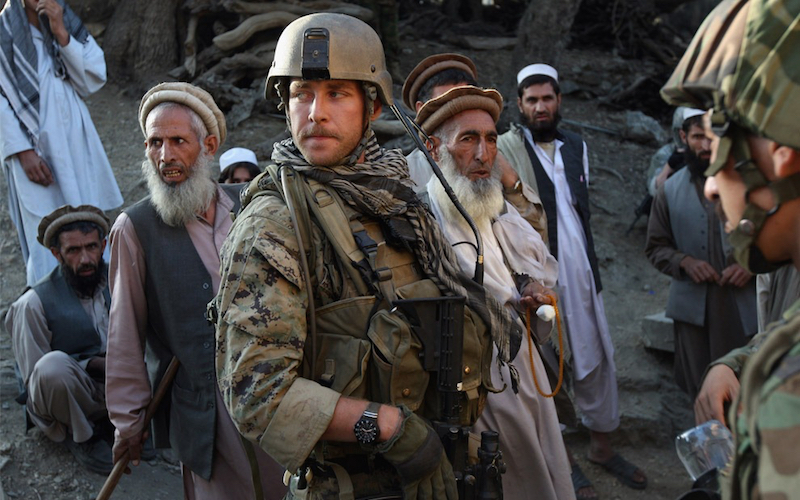
The Apotheosis of Central Asia?
The most neglected foreign policy debate today is the role Central Asia will play in the future. Since 2001, the United States, Russia, and China have actively sought strong relations with the Central Asian countries, which are former Soviet Republics. The centers of the world stage are increasingly driven by the affairs of the Middle East and East Asia. Regardless of which of these two centers will become increasingly important to foreign policy interests, Central Asia will play a pivotal role in providing a geopolitical path as it has for the past fifteen years. The renewed interest in Central Asia may be the first chapter in the new era of international triangulation in which the three powers previously mentioned are able to facilitate maximization of benefits and opportunities.
During the 1990’s former National Security Advisor to President Jimmy Carter Zbigniew Brzezinski applied the term “Eurasian Balkans” to Central Asia. Given the time and chaos in the former Yugoslavia, this obviously ominous term came to signify Dr. Brzezinski’s trepidation and forewarning that the Central Asian region was a hotbed of territorial, ethnic, nationalistic, and religious tensions that were akin to a tinderbox. During that decade, the Central Asian countries were in an inchoate status forming distinct identities different from their Soviet history. Nearly fifteen years after Dr. Brzezinski laid out his dire assessment of the “Eurasian Balkans,” the preeminent expert on Central Asia, Professor Alexander Cooley from Columbia University, has asserted that the region is stricken with kleptocracies and patrimonial ground rules that make it the most unpredictable and puzzling foreign policy dilemma for all three powers with stakes involved.
The world we are living in today has seen the securitization of collective security. US-NATO forces have pursued retrenchment from Kyrgyzstan, Uzbekistan, and the region as a whole after being unable to sustain basing agreements and relocating to Romania and the Czech Republic.
Furthermore, there is renewed discussion of increasing US-NATO operations in Poland, which President Obama decided to cancel in 2009. The Western collective security organization is beginning a trend of refocusing on Europe and the Middle East, while increasing American military forces in East Asia via Australia. The United States shows no effort to reengage with Central Asia on the level it did in the aftermath of the 9/11 attacks. China and Russia have taken measures to increase economic incentives to court the Central Asian kleptocratic governments in the hopes of oscillating the region toward a non-Western orient. China has outdone Russia in this regard and even though Russia considers Central Asia as its “near abroad,” China has used its tremendous economic clout to curry favor and maintain its influence in a region that is a pathway to Europe and the Middle East.
Russia and China lead their own respective collective security organizations: China’s Shanghai Cooperation Organization and Russia’s Collective Security Treaty Organization. The SCO and CSTO share four potential conflicts as they are both intricately involved with Central Asia and each other. Central Asia has two festering territorial disputes that can ignite a military confrontation. While Russia recognizes South Ossetia and Abkhazia, China does not. China has a long history of squashing separatism in Tibet, Fujian province, and so forth. China seeks stability and disagrees with Russia’s frozen conflict paradigm as a means of stopping Georgia from becoming part of the European Union and NATO. The second flashpoint of territorial conflict is Nagorno-Karabakh between Azerbaijan and Armenia. The dispute has gone endlessly in circles with no resolution or any of the three outside interlocutors pursuing mediation. While there may be no tangible political benefit in the current situation, a peaceful solution today may avert a deadly conflict involving NATO, the SCO, and the CSTO as all three collective security organizations would be involved in varied degrees.
The most underappreciated feature about Central Asia is that it lies within the sphere of nuclear catastrophe by virtue of the Korean peninsula and Indian-Pakistani nuclear activities. A spillover effect is more than likely if North Korea, India, or Pakistan initiate nuclear strikes and it would necessitate a clash of all three collective security organizations. The focus on Central Asia for the United States has been to provide deterrence against Islamic extremism and possibly China’s adventures in Southeast Asia and the South China Sea. Few foreign policymakers in the West have recognized that Central Asia can be a transit point in the event of Korean and Indian-Pakistani nuclear conflicts.
The potential for Central Asia to become a major source of international attention and activity is without question. Whether it becomes a transit hub stemming from events on Central Asian borders or a tinderbox because of internal regional religious, nationalistic, or ethnic strife, Central Asia should not be underestimated. There are also untapped resources and trade opportunities; this may mean that the three external powers may have to work with the kleptocratic governments or facilitate a new era of providing trade and security benefits with the precondition that transparent democratically-elected governments with foreign, unbiased election observers are ascending to the highest corridors of power.
Central Asia is today’s foreign policy question that must be debated and discussed. Its geographic location and possibilities are now the apotheosis of its importance in world affairs. The countries in Central Asia now face the dilemma of whether to reform and pursue bilateral relations with all three external powers or selectively engage on an ad hoc basis and maintain current government apparatuses that fall short of being constitutional or democratic. Washington, Moscow, and Beijing would be ill-advised to discount the region for it holds a cornucopia of trade and geopolitical opportunities. Fifteen years passed since the renewed interest in the region began. Today we are at a crossroads of where and how Central Asia will feature prominently on the world stage.

